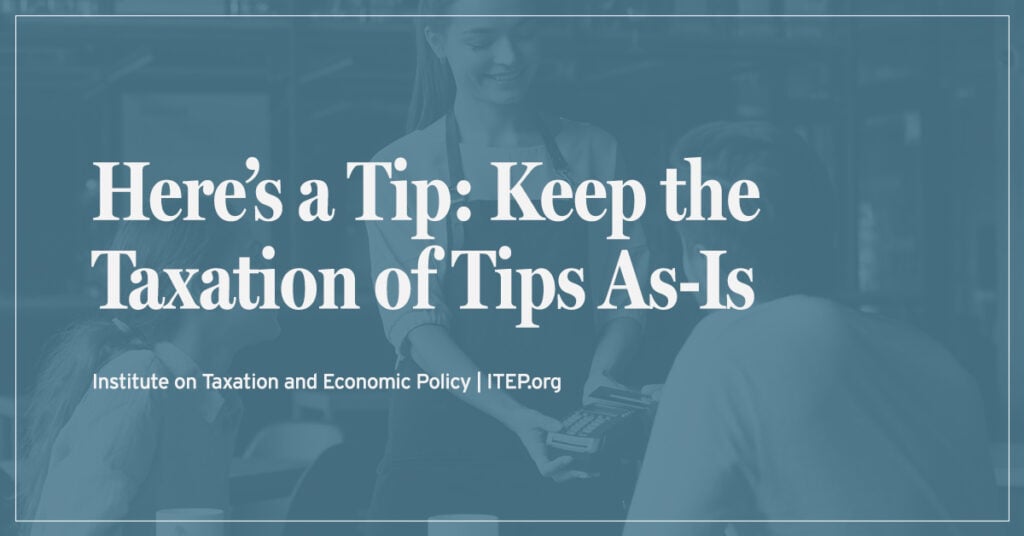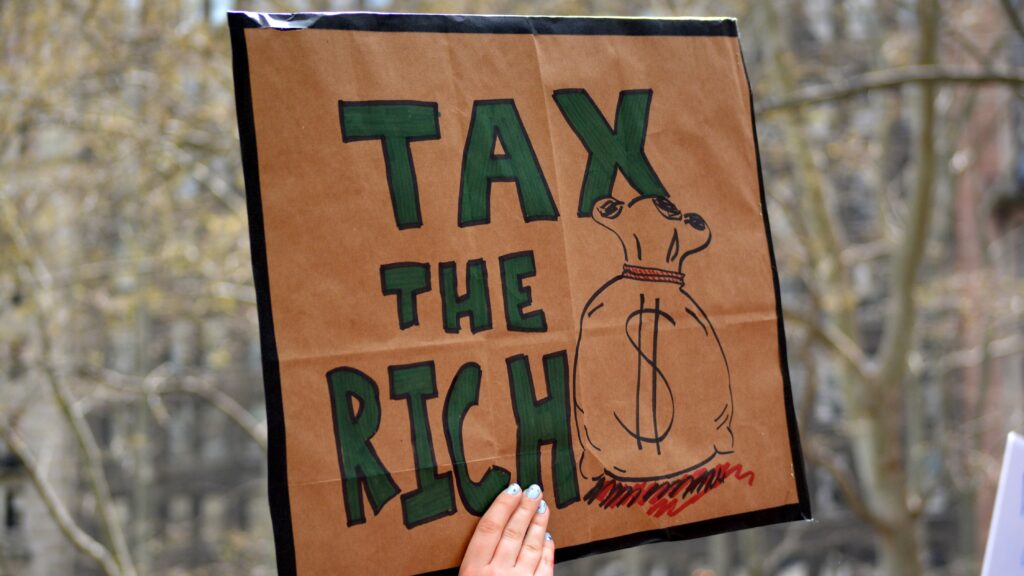Art Laffer and Stephen Moore recently penned an op-ed in the Wall Street Journal in which they called on state and local policymakers to support the Trump tax cuts. They claimed that the Trump plan would provide a significant boost to state and local tax revenues, thereby allowing states with large budget deficits to “regain fiscal health.”
State and local lawmakers should not be fooled by these claims. The reality is that Trump’s tax cuts are more likely to worsen state and local fiscal health than improve it.
Laffer and Moore’s argument basically goes as follows: the economy grew much faster under Ronald Reagan, who cut taxes, than under Barack Obama, who raised taxes; therefore tax cuts spur growth. And insofar as faster economic growth results in higher state and local tax revenues, federal tax cuts will boost state and local tax collections, while federal tax hikes will typically decrease state and local revenues. According to Laffer and Moore, state and local tax revenues grew at an anemic rate under President Obama, but will grow quickly again if President Trump’s Reagan-esque tax cuts are implemented.
This argument has a number of crucial flaws. First, you can’t help but notice how Laffer and Moore have tried to write both Bill Clinton and George W. Bush out of the history books. This is an especially convenient bit of historical amnesia for Moore, who surely doesn’t want people highlighting his own wrong predictions about growth under both Clinton and Bush. In fact, GDP growth averaged 3.4 percent under Reagan, but rose to 3.7 percent under the tax-hiking Clinton administration; growth then fell to 1.6 percent under the tax-cutting Bush administration, but rose back to 2.0 percent under President Obama. Laffer and Moore’s blatant cherry-picking aside, stronger growth has tended to follow tax hikes, rather than tax cuts, throughout the past few presidential administrations.
Second, Laffer and Moore mislead readers by asserting that tax policy alone must explain the difference in growth rates between Presidents Reagan and Obama. In fact, growth really should have been much stronger under Reagan than under Obama, if for no other reason than demographic trends. During Reagan’s eight years in office, the prime-age population – consisting of Americans between the ages of 25 and 54, who make up about two-thirds of the country’s workforce – grew by 17 million people. During Obama’s tenure, the same population grew by just 78,000. (In percentage terms, the prime-age population grew 19.8 percent under Reagan and just 0.06 percent under Obama.) This shift in demographic trends has created a major drag on GDP growth that cannot be easily remedied through changes in government policy. Because the Trump years are likely to see prime-age population growth far more similar to the Obama years than to the Reagan years, even if Trump enacts Laffer and Moore’s beloved Reagan-era policies, the economy won’t achieve Reagan-era growth rates.
If we take a deeper dive into the statistics on population growth and the labor market, we see just how thoroughly implausible Laffer and Moore’s 4 percent growth projection really is. As Carl Davis and I point out in a recent ITEP paper, in order for the economy to achieve an average growth rate of just 2.8 percent, per-worker output would need to increase more than 2 percent per year between 2017 and 2024. As we note, this would require the current rate of per-worker output growth to more than double; and historically speaking, output per worker has rarely grown faster than 2 percent, as can be seen in the figure below. In order to get to Laffer and Moore’s 4 percent growth rate, we’d need sustained per-worker output growth of roughly 3 percent annually, which we’ve never even approached in modern history. This makes Laffer and Moore’s 4 percent growth figure utterly impossible.

Third and finally, Laffer and Moore paint a badly misleading portrait of President Obama’s effect on state and local tax revenues – and in so doing, they also give a misleading picture of what revenue growth will look like under President Trump.
Laffer and Moore’s description of the Obama years omits any mention of the economic mess that President Bush passed to President Obama. The authors surely remember that the economy was shrinking when Barack Obama took office following the 2008 financial crisis. Moreover, the specific ways that state and local governments collect tax revenues only compounded the already-significant problems posed by this shrinking economy:
- About three-quarters of local government tax revenue comes from property taxes, and the bursting of the housing bubble from mid-2006 to mid-2012 was causing home prices to plummet at the time;
- Nearly half of state government tax revenue comes from sales taxes, and consumer spending had been falling for over a year before President Obama took office;
- Over a third of state government tax revenue comes from income taxes, and total national income was declining at a more precipitous rate than at any point since the 1940s when President Bush left the White House.
These factors alone were placing a significant strain on state and local governments just as President Obama was inaugurated.
Moreover, Laffer and Moore forget about all the ways that the Obama administration assisted state and local governments – and, consequently, about how that help might be withdrawn under President Trump. It’s true that state and local tax revenues fell from $1.49 trillion (in inflation-adjusted 2016 dollars) in 2008 to $1.41 trillion by 2010; however, during this time, the federal government significantly stepped up its assistance to states and localities. Specifically, federal assistance jumped from $536 billion in 2008 to $687 billion in 2010, an increase of over $150 billion. By contrast, between 2006 and 2008 – the last two years of the Bush administration – federal assistance rose by less than $4 billion. It is very odd, in this context, to accuse President Obama of having left state and local governments out to dry. Between 2008 and 2014 (the last year for which we have full data), total state and local revenues – including not only tax revenues, but also federal assistance and other forms of revenue – increased by $114 billion. Over $80 billion of this increased revenue came from greater federal assistance provided by the Obama administration.
The Obama experience makes clear that the three levels of government – federal, state, and local – do not operate in isolation. State and local governments receive about 40 cents of assistance from the federal government for every $1 that they raise in tax revenue. So if there is a significant drop in federal revenue, it will most likely result in decreased federal assistance to states and localities, thereby depressing state and local revenues.
And if you want federal revenues to grow rather than shrink, it’s clear that tax cuts for the rich will not accomplish this goal. In their article about the effects of Reagan’s tax cuts versus Obama’s tax hikes, Laffer and Moore somehow forgot to mention that federal revenue growth was much stronger under Obama than under Reagan. According to data from the Bureau of Economic Analysis, real federal revenues fell 13 percent under Bush, rose 26 percent under Reagan, increased 44 percent under Obama, and jumped 55 percent under Clinton (using the GDP Deflator to measure inflation). If President Trump’s tax plan results in large federal revenue losses – ITEP currently projects that his plan would decrease federal revenues by $4.8 trillion over the next ten years – then state and local governments stand to lose hundreds of billions of dollars in federal assistance.
Contrary to what Laffer and Moore have claimed, state and local policymakers who are concerned about their budgets should not count on the Trump tax plan to improve their fiscal situations, and may in fact need to brace themselves for new difficulties passed on to them by the federal government. Rapid economic growth is unlikely to accompany the Trump tax cuts, but cutbacks in federal support to states and localities are highly probable.





